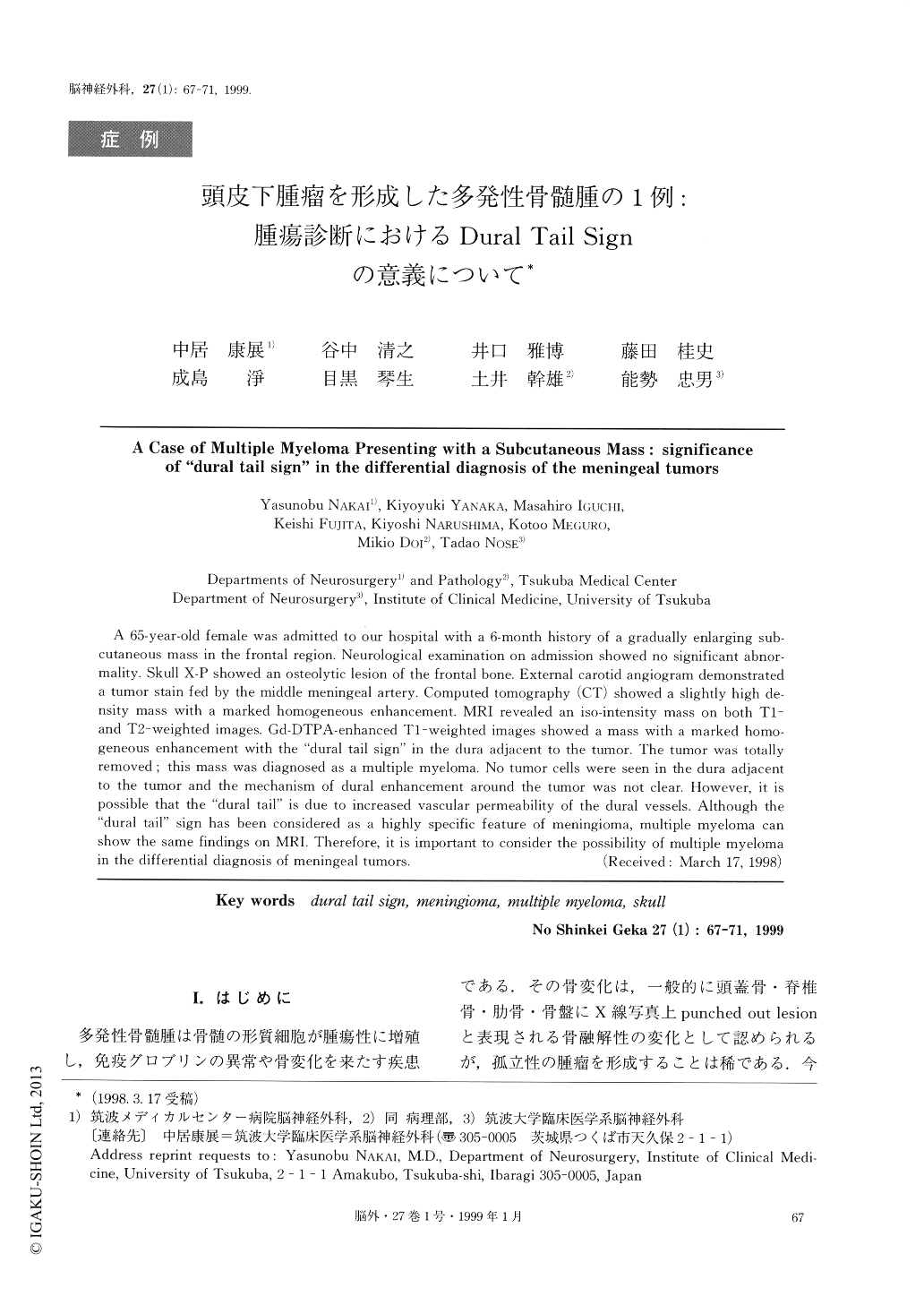Japanese
English
- 有料閲覧
- Abstract 文献概要
- 1ページ目 Look Inside
I.はじめに
多発性骨髄腫は骨髄の形質細胞が腫瘍性に増殖し,免疫グロブリンの異常や骨変化を来たす疾患である.その骨変化は,一般的に頭蓋骨・脊椎骨・肋骨・骨盤にX線写真上punched out lesionと表現される骨融解性の変化として認められるが,孤立性の腫瘤を形成することは稀である.今回われわれは,孤立性の頭皮下腫瘤を形成し,画像上dural tail signを呈し髄膜腫と鑑別を要した多発性骨髄腫の1例を経験したので,画像診断におけるdural tail signの意義について若干の文献的考察を加え報告する.
A 65-year-old female was admitted to our hospital with a 6-month history of a gradually enlarging sub-cutaneous mass in the frontal region. Neurological examination on admission showed no significant abnor-mality. Skull X-P showed an osteolytic lesion of the frontal bone. External carotid angiogram demonstrateda tumor stain fed by the middle meningeal artery. Computed tomography (CT) showed a slightly high de-nsity mass with a marked homogeneous enhancement. MRI revealed an iso-intensity mass on both T1-and T2-weighted images. Gd-DTPA-enhanced T1-weighted images showed a mass with a marked homo-geneous enhancement with the “dural tail sign” in the dura adjacent to the tumor. The tumor was totallyremoved; this mass was diagnosed as a multiple myeloma. No tumor cells were seen in the dura adjacentto the tumor and the mechanism of dural enhancement around the tumor was not clear. However, it ispossible that the “dural tail” is due to increased vascular permeability of the dural vessels. Although the“dural tail” sign has been considered as a highly specific feature of meningioma, multiple myeloma canshow the same findings on MRI. Therefore, it is important to consider the possibility of multiple myelomain the differential diagnosis of meningeal tumors.

Copyright © 1999, Igaku-Shoin Ltd. All rights reserved.


